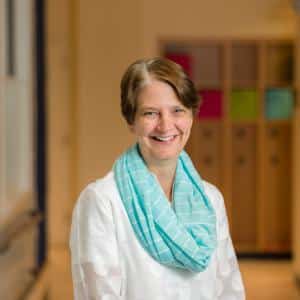The Courtyard Transformed
“The future will belong to the nature-smartthose individuals, families, businesses, and political leaders who develop a deeper understanding of the transformative power of the natural world and who balance the virtual with the real. The more high-tech we become, the more nature we need.” – Richard Louv, author of Last Child in The Woods
At Belmont Day our students are incredibly fortunate to have wonderful natural environments that enhance their education. They plant, weed, and harvest in our amazing garden next to the new bee hive; they explore the woods on snowshoes and by foot. Beautiful trees surround them on the playground, and blooming flowers greet them as they walk into school each day. One of the greatest assets of our school is the courtyard; a space where amazing birch trees and numerous rhododendron and other bushes thrive. Many people over the years have had big dreams for this space and we are thrilled to finally create a learning space for children that allows them to explore and create outdoors.
I have been fortunate to be part of a dedicated group of colleagues working together to transform our courtyard into an educational environment that aligns with our mission, values, and educational philosophy. It began with a shared vision and mutual passion. Deborah Brissenden, assistant head of school, pre-kindergarten and kindergarten teachers Lindsay Graves and Kate Isler, and I defined a vision of a natural environment, rich in open-ended materials, that would help promote in-depth investigation, physical experimentation, deep thinking, and educational play.
Along with other colleagues, we spent the summer engaged in a truly collaborative endeavor of planning and creating what has become an incredible outdoor curricular classroom. Our process was a great example of the way our faculty work together. We shared our ideas, collected readings and photographs, made connections with those who could help us, worked within a budget, got dirty, and celebrated the steps we took. We were inspired by the educational philosophies of Reggio Emilia and Frances and David Hawkins, by nature education, and the theory of loose parts play.
Landscape architect, Estelle Chase, met with us about the vision, then she and her Garden Mates crew did a fabulous job trimming and removing shrubbery, cleaning the stone benches and walkways, and laying new wood chips throughout the courtyard. Kate and Lindsay attended a professional development workshop at the Boulder Journey School in Boulder, Colorado that provided great inspiration. Together they, pre-kindergarten teacher Lesley Robbins, and I spent a day sorting through a huge salvage yard finding treasures. Together with Deborah we sketched out ideas, collected, cleaned, painted, and repurposed materials.
At the heart of our construction of this space was the use of loose parts. Loose parts are materialsparticularly natural itemsthat do not have a defined purpose. They include rocks, stumps, blocks, bamboo poles, shells, pinecones, fabrics, crates, bricks, and more. Children are naturally drawn to play with loose parts, creating dramatic play scenarios, conducting scientific discoveries, and constructing. As Lisa Daly and Miriam Beloglovsky wrote in their book, Loose Parts: Inspiring Play in Young Children, “When children interact with loose parts, they enter a world of ‘what if’ that promotes the type of thinking that leads to problem solving and theoretical reasoning. Loose parts enhance children’s ability to think imaginatively and see solutions, and they bring a sense of adventure and excitement to children’s play.”
We proudly unveiled the transformed courtyard at our opening meetings for faculty at the start of the school year. The true unveiling occurred earlier this week when our pre-k students had their first opportunity to play and explore in the courtyard. All of our visions were realized as students enthusiastically played together. Meals were planned and prepared in the dramatic play area. Explorers used binoculars and magnifying glasses as they skipped across the new bridge and darted in and out of bushes. Patterns were created with small tiles and with “gem” glass beads. Animal toys went on adventures together. Logs were hefted by several hands, loaded into wagons and carted from one end of the space to the other. A “campfire” was constructed with bamboo poles, logs, and crates. The language students used as they created stories, shared ideas, complimented one another, and asked profound questions was truly incredible. The collaboration, deep-level thinking, and especially the joy we witnessed were exactly what we had envisioned. I think we were all as excited as the students.
All of this took place with very few “rules” to follow. The adults offered no ideas to the students; instead they developed their own ideas and worked out disagreements entirely independently. This type of child-driven play, not scripted by adults or narrowly defined materials, is something that is being lost in our society. It brought us great pride to watch the pre-k students completely immersed in this type of play.
The courtyard will continue to be used by our students, primarily in pre-k and kindergarten, but also in drama classes, art experiences, with cross-graded partners, and by older students, as the year progresses. Changes in seasons will bring changes in the type of learning that takes place in this outdoor classroom. We hope you take a moment to walk through the space. We hope it awakens a sense of adventure, exploration and joy in you, just as it has for all of us and for our lucky Belmont Day students.



